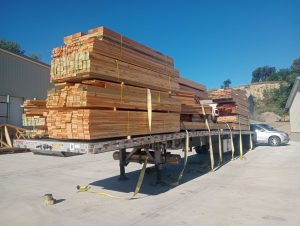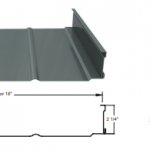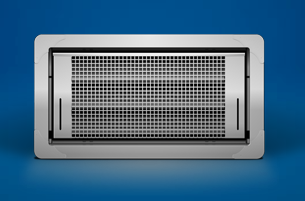In the construction of Eric’s new self-storage pole building, my son got to experience first-hand the effects of wane!
What exactly is wane?
When a log enters a sawmill, it is first cut into boards. Before further processing, most boards cut from the outside edges of the log exhibit wither residual bark or jagged edges where bark was originally. To the average lay-person, the board is missing one or more of its four ‘corners’. Essentially it is the bark edge, so instead of having a square cut piece of wood, the contour of the outer edge of the tree remains.
 This defect is known as wane, and its presence is accounted for in the lumber grading rules which are applied to each piece of finished lumber.
This defect is known as wane, and its presence is accounted for in the lumber grading rules which are applied to each piece of finished lumber.
I’ve previously written about the allowable defects in lumber: https://www.hansenpolebuildings.com/blog/2013/12/lumber-defects/
For a #2 grade (which is what is most commonly found at lumber dealers), wane is allowed to be up to 2/3 thickness and ½ width for ¼ length. On a 12 foot long 2×6, the wane could be 2-3/4” on the wide face, 1” in depth across the 1-1/2” face and three feet in length.
Whoa – this could be a BIG chunk of lumber missing!
Yes, however the design strength of each piece is adjusted from “perfect” by the defects – so it is accounted for.
What makes the challenge of wane in pole building construction, is when screwing through steel roofing or siding into the 1-1/2” face of a board – to find the screw going into empty space due to a region of wane.
In assisting with the construction of Eric’s new self-storage building, my son Brent learned roof purlins can be pushed upwards (towards the peak) or downwards (towards the eave) so screws can be guided into the solid portion of the board.
Now there are some ‘bad’ answers available online about wane (as well as most other subjects). At eHow.com:
“Wood with wane is not approved for use in home construction, particularly in the production of trusses.”
To the contrary, as long as the individual piece of lumber meets with the grading requirements, it may be used structurally. Just like Brent’s case above – excess wane can become more time consuming at time of installation.
For trusses, wane only becomes a structural issue where an excess is located at the juncture of the pressed steel connector plates. Small amounts of wane can be compensated for by larger connector plates, and excessive amounts can cause the piece or pieces to be rejected prior to assembly of the truss.
Wane can throw some people off, as it’s not as “pretty” as wood without it. However, if used according to lumber grading requirements, once wood with wane is underneath roofing and siding, it doesn’t matter if it’s “pretty” or not, as long as it performs. And perform it will.









NATIONAL GRADING RULE for DIMENSION LUMBER November 9, 2018 National Grading Rule Committee says only 1/3 (not 2/3)
The 2/3rd is for up to 1/4 of the length. Article is correct.
For #2 lumber
Wane – 1/3 the thickness and 1/3 the width full length, or equivalent on each face, provided that wane not exceed 2/3 the thickness or 1/2 the width for up to 1/4 the length.
I have a storage building that was apparently built with #2 grade treated boards for the floor joists. Should I complain to the company who built the building?
Provided they meet with engineering requirements and the scope of your contract there really is nothing to complain about.